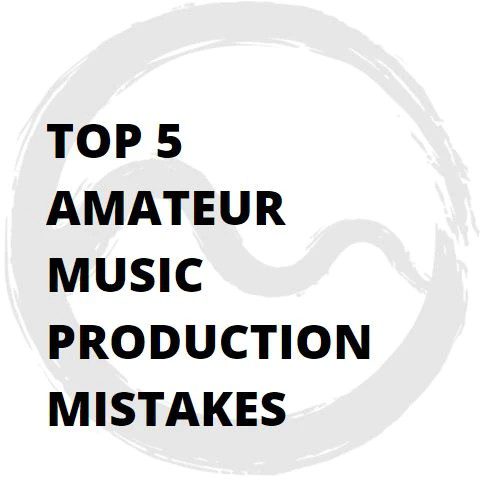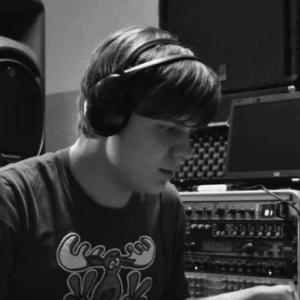
This is the my personal Top-5 of Xfer Serum Presets…

The music industry is filled with aspiring artists and musicians, there are numerous technologies and software available to help in production. The industry has never been more competitive and indeed, standing out is more difficult. However, there are some things you should avoid if you’re trying to stand out and take your music production to the professional level.
In this article, we’ll be looking at five amateur mistakes to avoid in your music production.
Digital Audio Workstations (DAWs) usually come with a lot of plugins. The first mistake you should avoid when producing is using more plugins than is needed. When you don’t understand your mix decisions, you begin to insert plugins randomly. Whenever you feel there’s an issue with your track, instead of loading it with other plugins, take a pause and check if the plugins that have been used are having the desired effect or not. Sometimes, you might need to do something else entirely, maybe even mute a track. You are able to avoid having to use more plugins to fix issues caused by previous plugins used.
Another thing is the misunderstanding of plugins. A practical example of this is compression and over-compression. Compression is used to make things louder, but when overused, the sound occupies more space, and the other instruments and sounds become less audible. This throws the entire mix off-balance. Likewise, the over-compression plugin, when not done correctly, sucks the life out of the track. Instead of creating a musical sensation by making sounds pump and breathe, noise creeps between drum hits.
Even though the aim is to produce something that sounds good, your work is simpler and easier to navigate when you use fewer plugins. Being creative can be messy but for the whole work to be balanced, all tracks should flow into one another. If you’re still trying to learn sound mixing, you can check some sounds out at Monosounds for a reasonable price.
Mixing involves the combination of multiple audio layers in the production of a track. However, mixing these sounds or components in isolation should be avoided. It can lead to poor and amateurish production quality. Mixing sounds in isolation is often tempting as it is easier to hear sounds in isolation. But this also means in an effort to make each part as good as possible, we are at risk of “over-cooking” each part of the track. When this happens, the result is generally a badly produced song. It is important that all tracks work together. The best way to ensure this is by hearing it alongside other sounds involved in the production process and never in isolation. A particular track might sound awful in isolation but fit perfectly when played together with everything else. Similarly, a sound might be awesome solo but be chaotic when used with other parts.
Enhancing components of a song in isolation is fun, but the most important thing is for all the ingredients used in production to work together.
This is one of the most neglected issues that lead to poor production. A solid arrangement is one of the most essential features of a well-recorded track. The right blend of instruments needs to be chosen before they are then put in proper layers to keep the song in proper motion.
To avoid amateur productions, spend enough time making good arrangement decisions. Leaving space when and where appropriate, and adding and subtracting elements as the song progresses are some of the things you should pay close attention to. Don’t riddle your work with the same sounds and elements at the same point that you end up cluttering the production.
While this might sound complicated, here is a question to ask yourself when trying to get a better arrangement.
What is the most important element of the music? Identify what you want the listeners to focus on and examine that part. In what order can you vary it or can you add something to make it better?
Once you’ve identified the important part, ensure your arrangement emphasizes those elements. If it doesn’t, something is bound to be wrong with the music production.
You can then think of how to make use of textural elements like reverb, delay, bloops, beeps, guitars, strings, pads, and harmonies, to name a few. When these elements are used to support the track’s main elements, the production sounds rich and professional.
While it’s true music is an art and there are no set rules, being mindful of the elements and the order you use them will increase your chances of producing something that sounds professional.
Even though there is access to numerous musical technologies, being a successful and professional producer still needs time and effort. To put it simply, there are some basic rules that can not be ignored in music production.
Apart from being an art, music is also a science. How does music flow through the air? How does the human body react to it? All these are scientific understanding needed to make better production decisions.
Even though you don’t need to study music specifically, having knowledge about music production is crucial. To successfully manipulate the arrangement of a track, to give sections the desired effects are all things that can only be done by someone that has the knowledge.
There are a lot of production techniques that can be used to enhance your song. But for every decision made during music and sound production, there should be an objective. Sometimes, the problem with the production is simply a lack of that specific skill set or knowledge.
Finally, to make your music production professional and not sound amateurish, you need to use a minimum of one reference track, sometimes even more. Choose tracks you’re familiar with and really understand so it’s easier to make comparisons.
An excellent and professional reference track makes everything easier and can help you in all stages of production. By serving as a form of precaution it becomes your safety net. Without them, your production is random as there is no particular standard set for quality.
How do you use reference tracks? Reference tracks can be used right from the stage of recording to the mastering stage. All you need to do is to listen to a reference track for ideas and tips on the arrangement to use, how your mix balances, and then an idea of the quality you want for your master copy. However, be careful when using reference tracks so you don’t end up matching and recreating the referenced track. That’s not the aim!
Because it’s important to make sure you hear the reference track and the work in progress at the same volume when referencing, a plugin like Alliance’s Metric A/B can be very helpful. The plugin will also give you a more defined picture of ways your music production can be improved.
By using a professional track as a reference, you have an idea of how your work compares to a masterpiece or professional production. Once again, ensure your own work is original and you’re not just copying everything. This is one of the easiest ways to avoid bad decisions that will make your production sound amateur.
Luckily for you, Monosounds.studio is here to help. Our sound kits, melody loops and sample packs make it possible and easy for you to make professional sounds. Our duty is to give you all you need for inspiration and to take your music to a greater and more professional level.

This is the my personal Top-5 of Xfer Serum Presets…

Welcome to the ultimate guide on how to use Xfer…

Hip hop music has been one of the most popular…

Greetings fellow sound engineers and music creators, and welcome to…
